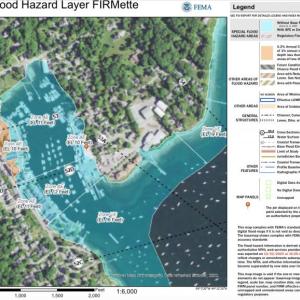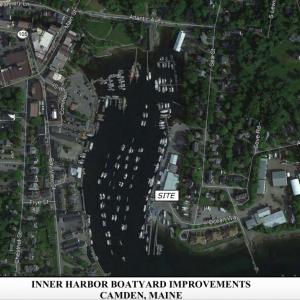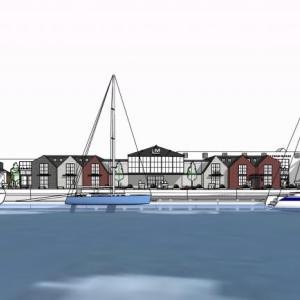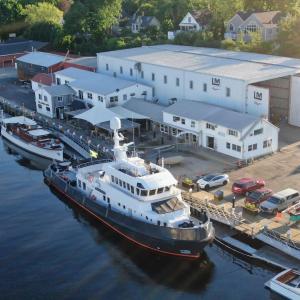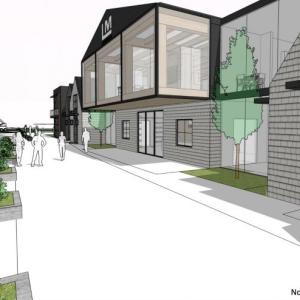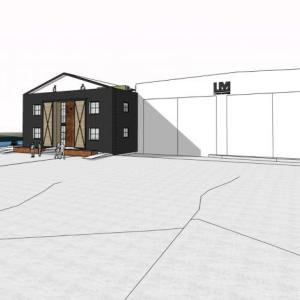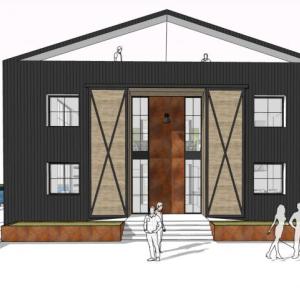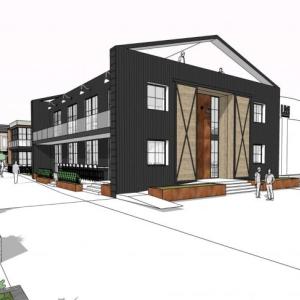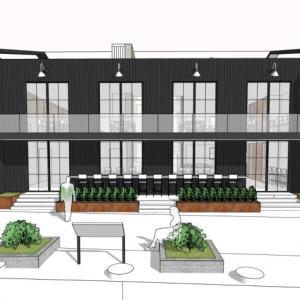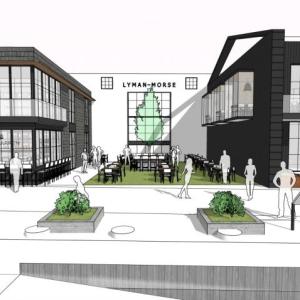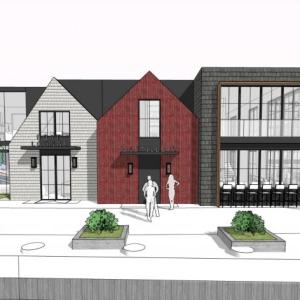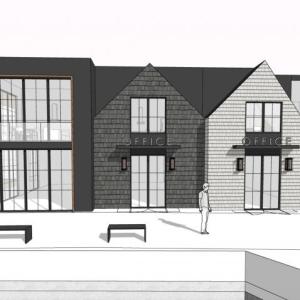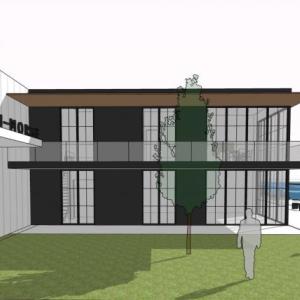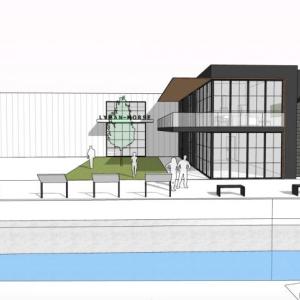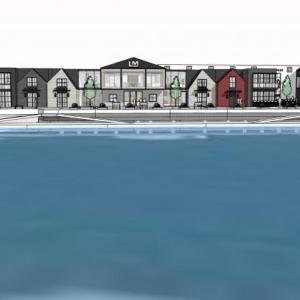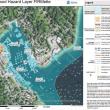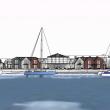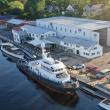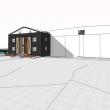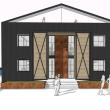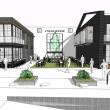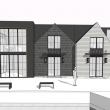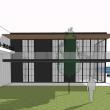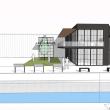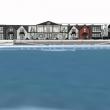Camden Harbor development plans scrutinized; questions raised over traffic, noise, rising sea level
 The Camden Planning Board met Nov. 19 via Zoom to begin consideration of the Lyman-Morse waterfront development project.
The Camden Planning Board met Nov. 19 via Zoom to begin consideration of the Lyman-Morse waterfront development project.
 The National Flood Hazard Layer is a geospatial database that contains current effective flood hazard data. FEMA provides the flood hazard data to support the National Flood Insurance Program. The federal government provides the information, “to better understand your level of flood risk and type of flooding.” More information is available at fema.gov/flood-maps/products-tools/national-flood-hazard-layer
The National Flood Hazard Layer is a geospatial database that contains current effective flood hazard data. FEMA provides the flood hazard data to support the National Flood Insurance Program. The federal government provides the information, “to better understand your level of flood risk and type of flooding.” More information is available at fema.gov/flood-maps/products-tools/national-flood-hazard-layer
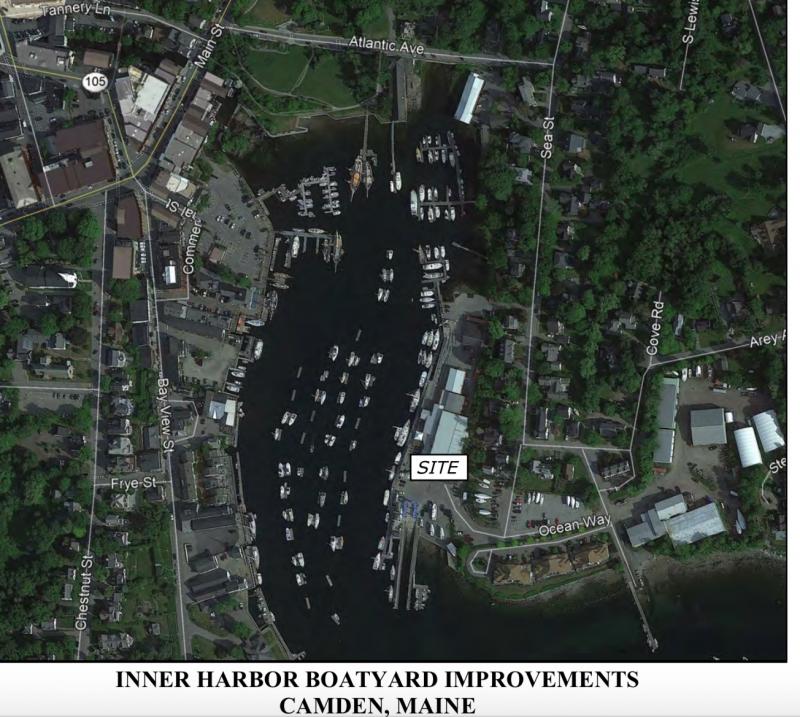 An aerial view of the Camden Harbor, which is included in the Lyman-Morse site plan review application filed with the Camden Town Office and available here: https://cms8.revize.com/revize/camdenme/Planning%20Board%20Packet%2011.19.20.pdf
An aerial view of the Camden Harbor, which is included in the Lyman-Morse site plan review application filed with the Camden Town Office and available here: https://cms8.revize.com/revize/camdenme/Planning%20Board%20Packet%2011.19.20.pdf
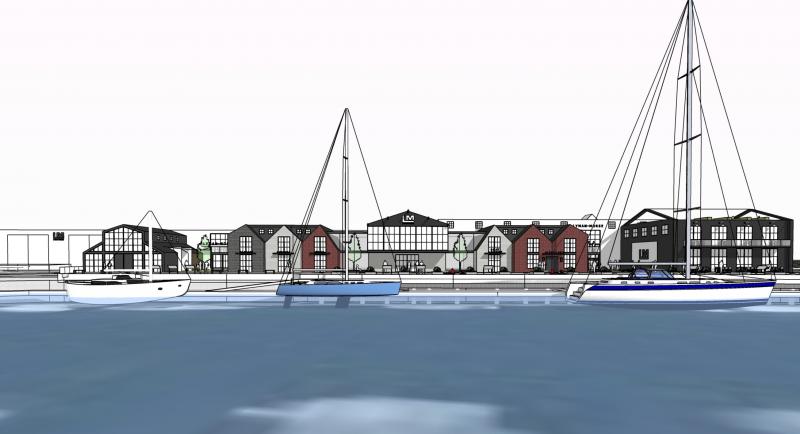
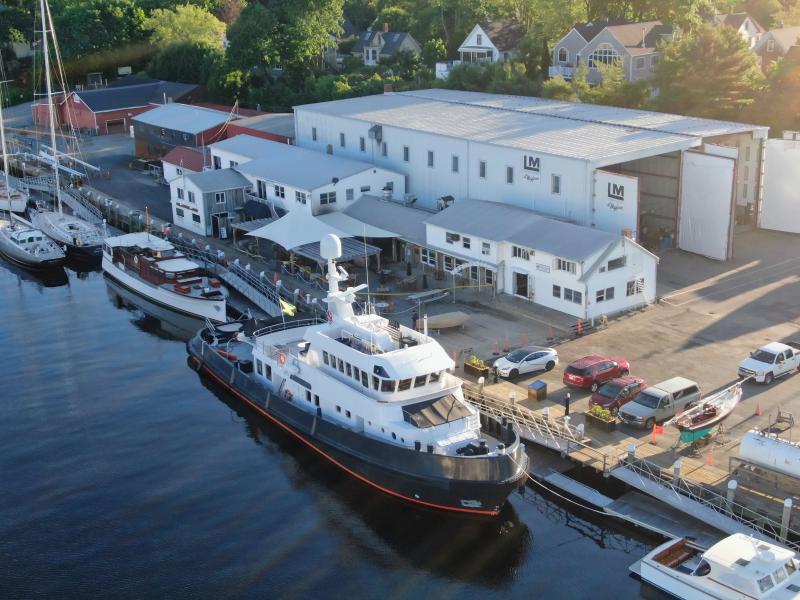 A photo of Lyman-Morse boatbuilding on the east side of Camden Harbor later in the morning, June 14, after a fire destroyed much of the Rhumb Line restaurant’s back storage and utility rooms in the building. (Photo courtesy Todd Anderson)
A photo of Lyman-Morse boatbuilding on the east side of Camden Harbor later in the morning, June 14, after a fire destroyed much of the Rhumb Line restaurant’s back storage and utility rooms in the building. (Photo courtesy Todd Anderson)
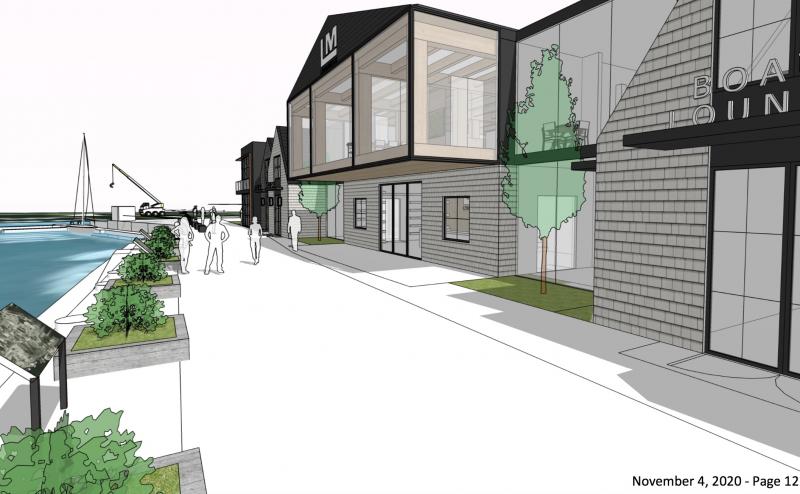
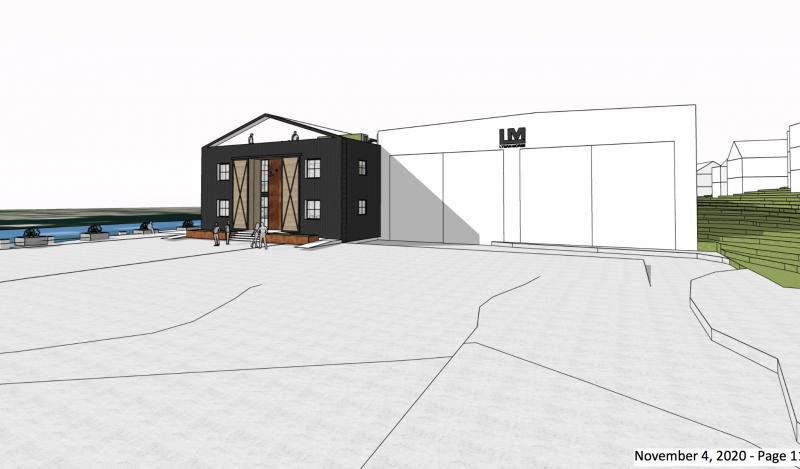
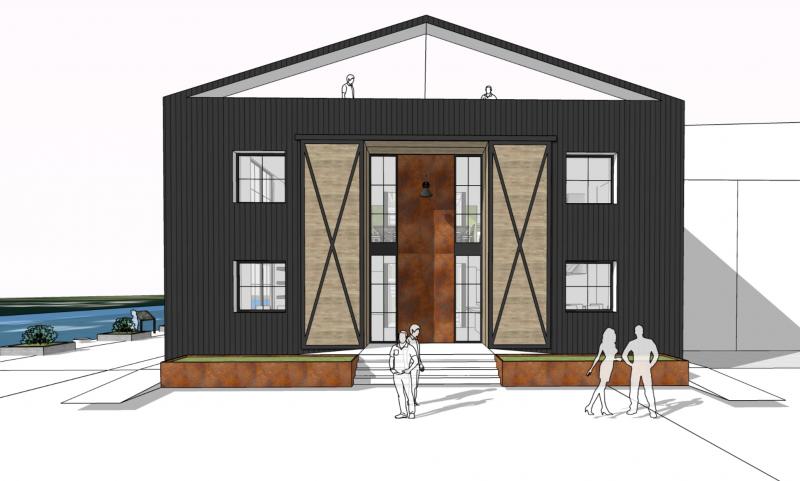
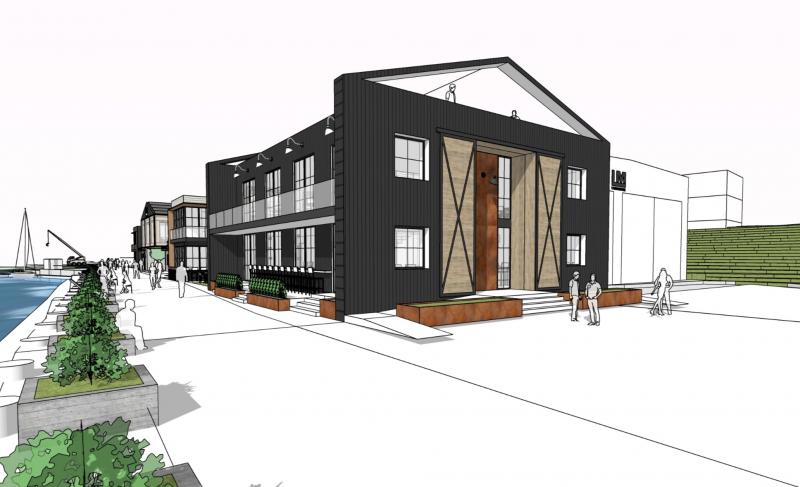
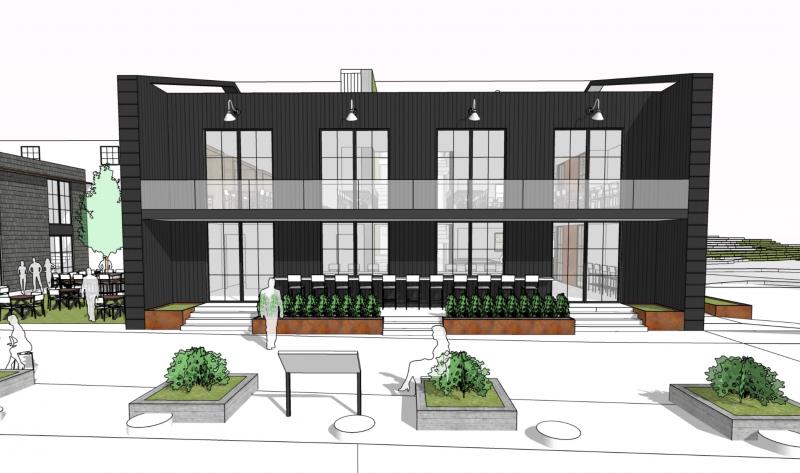
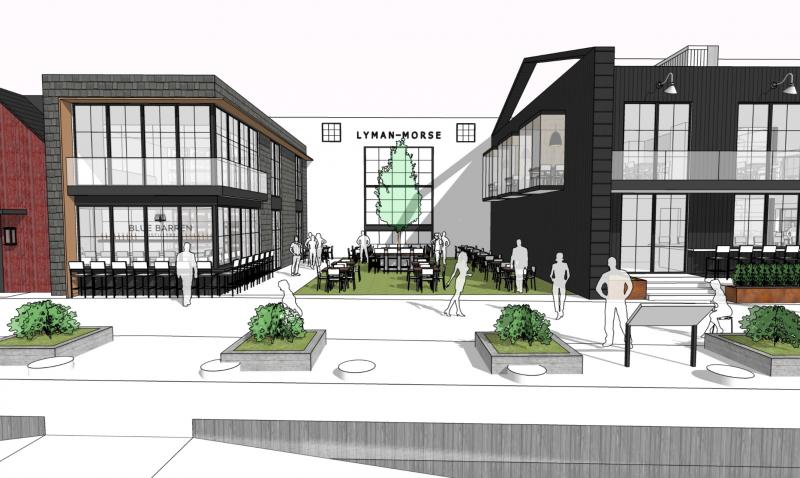
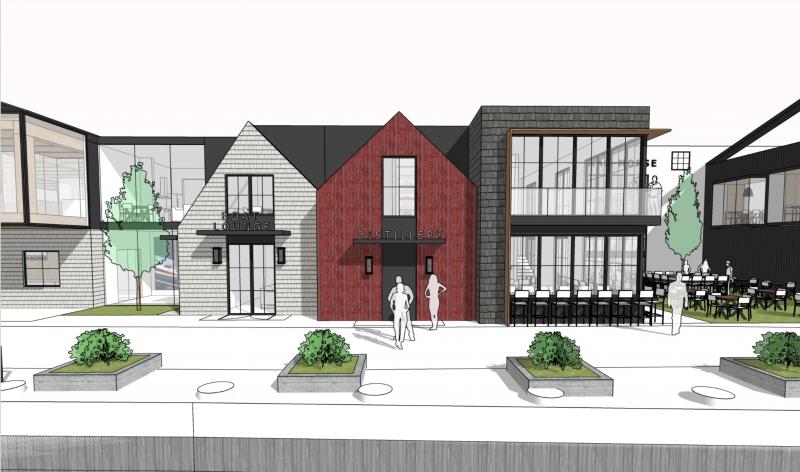
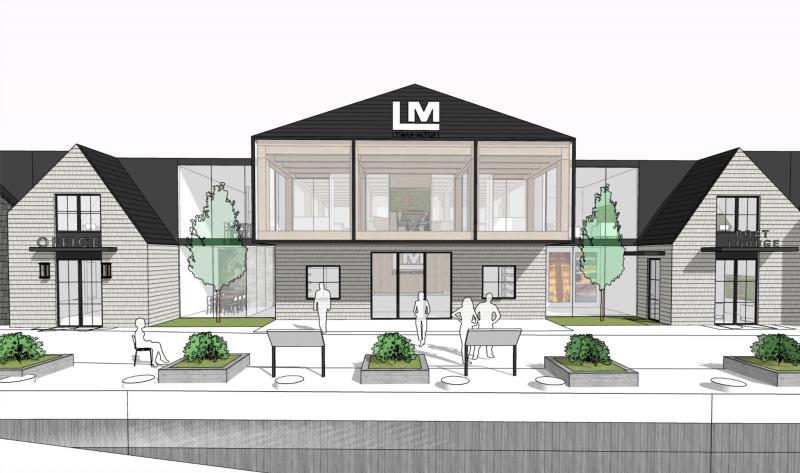
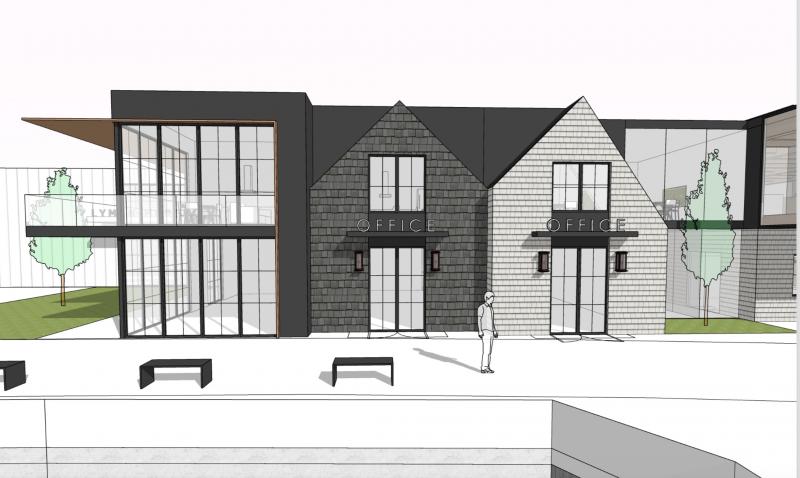
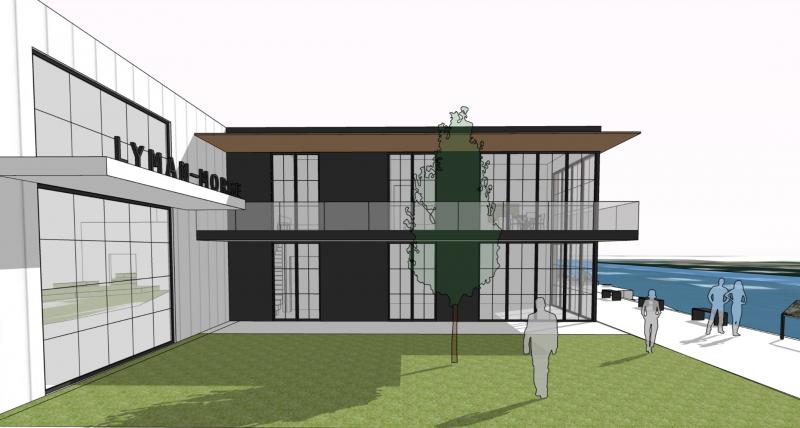
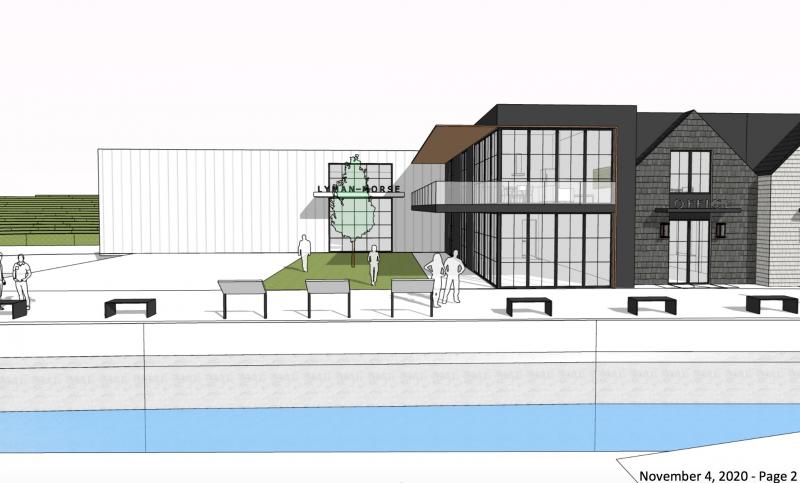
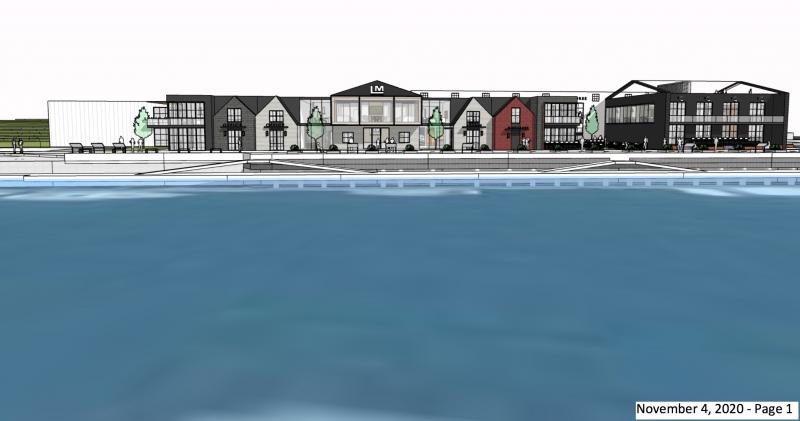
 The Camden Planning Board met Nov. 19 via Zoom to begin consideration of the Lyman-Morse waterfront development project.
The Camden Planning Board met Nov. 19 via Zoom to begin consideration of the Lyman-Morse waterfront development project.
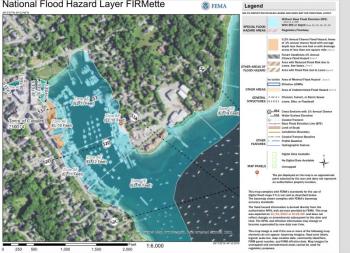 The National Flood Hazard Layer is a geospatial database that contains current effective flood hazard data. FEMA provides the flood hazard data to support the National Flood Insurance Program. The federal government provides the information, “to better understand your level of flood risk and type of flooding.” More information is available at fema.gov/flood-maps/products-tools/national-flood-hazard-layer
The National Flood Hazard Layer is a geospatial database that contains current effective flood hazard data. FEMA provides the flood hazard data to support the National Flood Insurance Program. The federal government provides the information, “to better understand your level of flood risk and type of flooding.” More information is available at fema.gov/flood-maps/products-tools/national-flood-hazard-layer
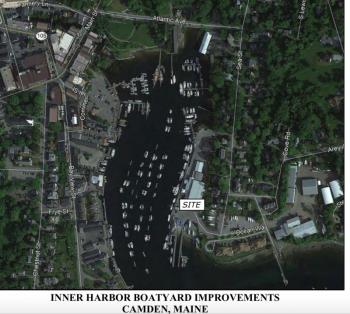 An aerial view of the Camden Harbor, which is included in the Lyman-Morse site plan review application filed with the Camden Town Office and available here: https://cms8.revize.com/revize/camdenme/Planning%20Board%20Packet%2011.19.20.pdf
An aerial view of the Camden Harbor, which is included in the Lyman-Morse site plan review application filed with the Camden Town Office and available here: https://cms8.revize.com/revize/camdenme/Planning%20Board%20Packet%2011.19.20.pdf
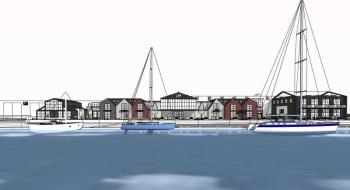
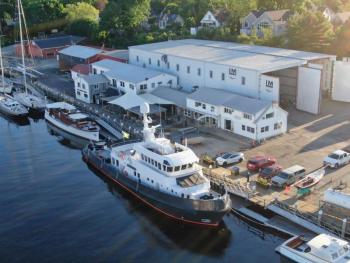 A photo of Lyman-Morse boatbuilding on the east side of Camden Harbor later in the morning, June 14, after a fire destroyed much of the Rhumb Line restaurant’s back storage and utility rooms in the building. (Photo courtesy Todd Anderson)
A photo of Lyman-Morse boatbuilding on the east side of Camden Harbor later in the morning, June 14, after a fire destroyed much of the Rhumb Line restaurant’s back storage and utility rooms in the building. (Photo courtesy Todd Anderson)
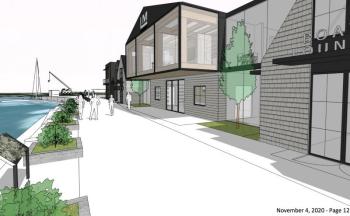
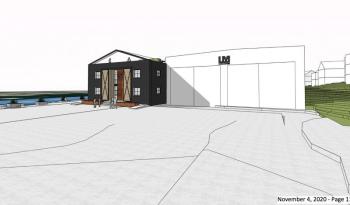
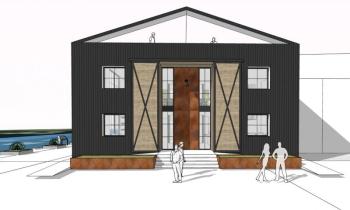
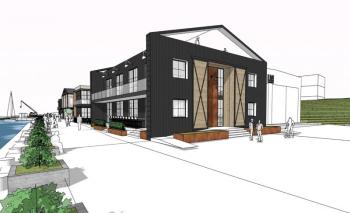
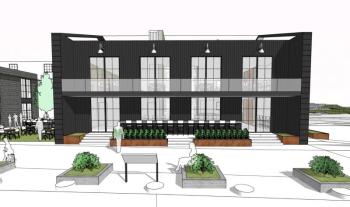
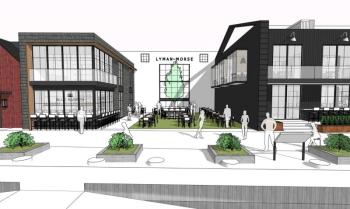
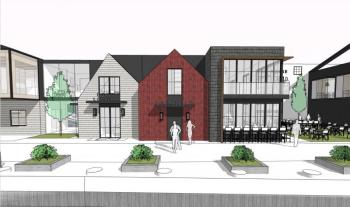
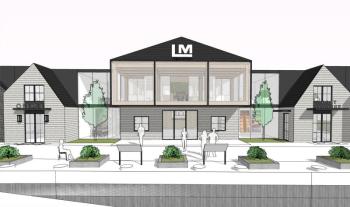
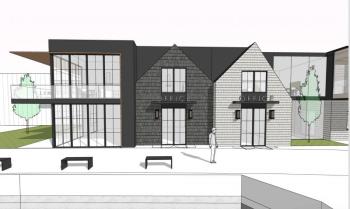
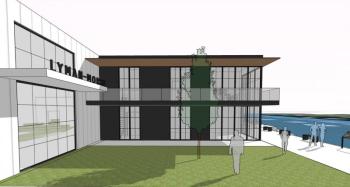
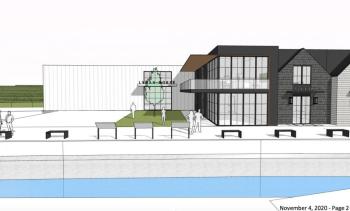
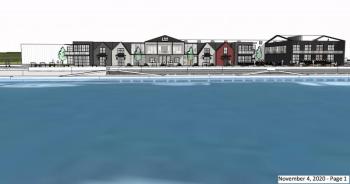
CAMDEN — The Camden Planning Board settled Nov. 20 into a three-hour virtual public hearing on the Lyman-Morse proposal to tear down sheds and offices, rebuild the bulkhead, and construct a complex of boatyard and commercial buildings, including a new distillery and rooftop restaurant, along the east side of the inner harbor.
The privately-owned business wants to get started on the project this winter or early spring, and the Camden Planning Board signaled it was willing to meet again in early December to pick through its site plan review criteria. That meeting has tentatively been scheduled for Dec. 3.
While there was much support verbalized for the project, indicated by submitted letters and emails that praised the Lyman-Morse for its enterprise, and for keeping the property secured from condominium development, there was likewise concern about the boatyard moving too far toward recreational and retail purposes, and away from its roots as an authentic working waterfront.
Some praised the design; others denounced it. Some neighbors are worried about noise carrying from the rooftop open-air restaurant, as well as increased Sea Street traffic and pedestrian safety.
And, there was a broad discussion about the specter of rising ocean levels.
The latter drew acknowledgement from Drew and Cabot Lyman, who own Lyman-Morse Boatbuilding, Inc., that there is financial risk in rebuilding close to the water, given global warming and consequential ocean level rise.
“You are preaching to the choir,” said Drew Lyman, at one point during the meeting when the topic surfaced. “My father and I take it seriously.”
He said that he and Will Gartley, who is engineering the overhaul design, “have looked at that a lot.”
But, he added, while ordinances and rules governing how coastal municipalities respond get developed, Lyman-Morse must move forward with its plans.
“Can we put these buildings in in a way that they can be moved?” he said. “The cost of that would probably shut this thing down.”
He emphasized that the business needed to recover from the fire that destroyed a portion of the boatyard building in June 2020, which is the impetus for taking the plans to the town for approval.
“Next year, we have to get something built,” he said.
Plans
At the June 14 fire, which started in the backrooms of the Rhumb Line restaurant in the middle of the night, has been attributed to malfunctioning appliances. The fire resulted in extensive damage throughout the boatyard.
Rebuild plans were subsequently drawn, by Greenspur designers, of Fall Church, Virginia, that require the demolition of most of the existing buildings, totaling 31,410 square feet. Those buildings have existed for decades, having evolved into a warren of structures cobbled together through the years the boatyard was known as Wayfarer Marine.
In their place are to be new buildings, a new boardwalk, as well as two green courtyards. The complex extends from the southeast entranceway to the boatyard property toward the middle of the inner harbor on land that Lyman-Morse owns and operates under Camden Properties LLC and CL-Camden LLC. The boardwalk is to be extended and raised to 11 feet above the flood elevation. The existing boardwalk is 9.5 feet above the floodline, said Gartley, at the hearing.
The new buildings are to include a two-story restaurant with a rooftop seating area, distillery, retail space, the Lyman-Morse office building, additional office space for lease, crew quarters for sailors to use while their boats are being serviced, and more rental space. Interspersed are two public green spaces.
At the north end, a 6,000 square-foot building is to be used for rigging and varnishing.
The one building to remain is the large 11,000-square-foot boat shed on the southeast corner of the property, near the entrance driveway.
In total, 31,420 square feet of buildings are to be demolished, to be replaced with 32,924 square feet of new structures, representing an increase of 1,524 square feet of lot coverage.
Construction also includes felling Norway maples that border one property line with a private residence (the property owners want them removed for the sake of a view) and rebuilding a four-foot-tall retaining wall that runs along the back side of the Lyman-Morse property, separating it from its neighbors whose homes line Sea Street.
The parking lots have also been revamped in the plans, with designated spaces formally laid out in the boatyard’s upper lot, where currently boats and vehicles have shared a common gravel lot.
This rebuild of the inner harbor complex is not the only project that Lyman-Morse has considered for its Camden properties. The company owns the Bean Yard, a large lot abutting the publicly owned Steamboat Landing. There, Lyman-Morse has talked over the past few years about using a $1.5 million federal grant to construct and install a 120-foot fixed pier, a 334-foot wave-attenuating floating dock, a 579-foot floating dock, and 16 slips for other transient vessels, providing a total of 2,000 linear feet of new dockage for eligible transient boaters.
The company believes that these upgrades will help to make Camden a destination for boat repair and service operations and strengthen employment opportunities for the local workforce, the release said.
While Lyman-Morse still has future plans for the other projects, at the moment its focus is on the Inner Harbor Boatyard Improvements that are currently under review by the Planning Board, said Joshua Moore, of Lyman-Morse, after the meeting.
Citizen feedback
The Camden Planning Board and planning office went to great lengths Nov. 19 to ensure the public had adequate opportunity to comment and participate in a virtual public hearing, at which significant changes for the Camden waterfront were examined and questioned.
Letters arrived at the planning office in advance of the Nov. 19 meeting, and individuals who held “standing” — generally those whose property abuts the Lyman-Morse parcel — were invited to the actual Zoom meeting of the Planning Board.
Others, including six or seven commenters, watched the meeting on the town’s YouTube channel and delivered their thoughts via the chat function provided there. Those comments were then provided by town staff to the Planning Board while the meeting was in progress so that the entire board was able to hear the public opinion. Still others submitted emails to the town office, which were also monitored and delivered to the Planning Board during the meeting.
At the meeting, after Will Gartley delivered a short presentation about the plans and the Planning Board found that the plan was complete, Camden Planner Jeremy Martins spent 35 minutes reading into the record the bulk of the letters that had arrived by Nov. 19. The majority expressed support for the project.
Those letters included statements such as:
• “Please send the Lyman-Morse building plan back to the drawing board. This design does not belong on our beautiful New England village waterfront.” — Harry Smith
• By 2050, the conservative estimate for sea-level rise is 1.5 feet, and communities, according to page 72 of the newly completed Scientific Assessment of Climate Change and Its Effects in Maine, should be ‘prepared’ to manage a 3-foot rise. By 2100, scientists expect that sea level will rise between 3.9 and 8.8 feet.” — Marina Schauffler
“The result [of the planned rebuild] will make an important contribution to Camden. It will be a more beautiful harbor that will increase Camden’s international reputation as a destination and improve its ability to care for boaters.” — Charles Thomsen
• “We are writing to articulate our support for the Lyman Morse harbor front overhaul. We feel fortunate to have these business owners as part of our community because they have the vision, resources and commitment to transform this collection of legacy buildings into such an exciting open-access complex.” — Brian and Jo-Ann Lightbody
• “The proposed plan yields esthetic improvements, public access improvement and most importantly, operational improvement.... I urge you to dedicate a strong effort to support ongoing commercial marine activities around Camden Harbor and assure continued economic and workforce development in our region.” — Richard Anderson
• For almost 200 years, the boatyards located on and near that site were strictly industrial yards not welcoming to the public and only focused on the construction or maintenance of vessels. The ability for Lyman-Morse to maintain this world class marine building and repair business while also allowing public access to the grounds will be a great benefit to Camden.” — Tyler and Kristen Smith
• The project has the further advantage of helping to secure Camden’s future as a town-centered around its harbor, which provides year-round employment and generates significant commercial activity in support of the local economy.” — Roger Moody
• “Tourism and commerce are the lifeblood of our community and we believe that this reconstruction project will help move Camden forward in reasonable and creative ways.” — Howard Holmes
• “I understand concerns about the project’s design aesthetics, but I believe that the magic of Camden Harbor is not so much about how it loos as the way its elements form a compact theater of interesting human activity. Almost wherever you go around the Inner Harbor, there’s apt to be something lively going on both in foreground and background, be it boating, working, promenading, or playing in the park. Take away any lively element — like when mostly seasonal condos replaced a small marina — and the overall magic is chipped away. Or vice versa, as looks to be the case with LM’s dense multi-use proposal.” — Ben Ellison
• “While we appreciate that the particular details of the design will continue to evolve, and that there will be further discussions regarding associated issues, such as the necessary construction disruption to the community, traffic, parking and the noise potential from the rooftop restaurant area, etc., we support Lyman-Morse’s efforts, its general design, and its willingness to continue to work cooperatively with the town and community.” — Peter and Susan Fitzgerald
• “I am pleased with the new plan, and the adherence to a 24-foot height for the building planned for the area in front of my property. However, I am requesting that any landscaping planned for the area in front of my building be restricted in height so as to never block the harbor views afforded by my tenants....” — Carl Peter Ripaldi
• “Rooftop bar noise: The hew proposed height of the bar will cause significant noise to fill the south end of Sea Street. The prior bar was in front of and blocked by the buildings. Though we could at times hear crowd noise and music, it was tolerable. By adding a wall on the east side of the rooftop bar area, the noise could be deflected with affecting water views.” — Jim and Sheri Deignan
• Some would say that the speed with which this proposal went from presented draft to approval (assuming its through the Planning Board on Thursday and there is no reason it won’t, since they were careful to meet every code) is pro-business and good for Camden. But it seems to me that no one has stopped to reflect very deeply on the impact, good, bad or indifferent, to the harbor and more importantly, the town, with these dramatic and important changes.” — Kathy Young
Planning Board asks questions
Public comments were also delivered Nov. 19 via the chat function on YouTube, and email delivered during the meeting. After hearing the comments and entering them into the record, the Planning Board then closed the public hearing portion of the meeting and initiated a conversation amongst its members.
That general discussion precedes the more formal descent through the list of Planning Board review criteria, which will be addressed Dec. 3.
However, board members did have a chance to ask questions, and just prior to that segment of the process, the floor was opened to the two Camden Select Board members, who were also on the Zoom call.
Select Board member Alison McKellar noted the plans reflect a commitment to the community by Lyman-Morse.
“Camden is extraordinarily fortunate to have an applicant like Lyman-Morse,” she said. “Even since Mary Louise Curtis Bok [a generous local benefactor now deceased] we have seen proposals for condos over in the area. Everyone has always recognized the incredible money-making capacity that condos on this property could have.”
She continued: “Drew has not done this and has been sensitive to the marine, business and commercial use. It’s really the best case scenario.”
But, she said the fire had pushed the proposed plans forward before the town had a chance to develop its own ordinances and approach to wrestling with rising sea levels.
“The most troubling part to me was listening to the public informational meeting of the Planning Board and hearing the concerns brought up about sea level rise and why the buildings were not going to be sited higher.”
McKellar said mechanisms exist to hold special town meeting to “give the public the opportunity to give the needed flexibility here.”
That flexibility related to height of buildings.
Sea rise
Planning Board member Ethan Shaw thanked the public for submitting comments, and in particular, Marina Schauffler, Select Board member Alison McKellar and the Watershed School students for shedding light on the issue of rising sea levels.
He commended the effort by Lyman-Morse to make the design work for the waterfront and the community, and keeping it a working waterfront, but was concerned of the project’s pace toward seeking municipal approval.
“I know the fire has accelerated it,” he said, “and I know that we are dealing with an issue of the sea level rise is uncertain to some people. But if we are looking at all the studies that have been done, we are looking at a project in the millions of dollars that could be under water in 50-100 years.”
Shaw cited the idea of addressing associated ordinance language in a special town meeting.
He cited the possibility of seeking a variance for the buildings’ height in accommodating sea level rise.
That’s when Drew Lyman commented that the company held similar concerns about rising sea levels, But, he added, Lyman-Morse needed to move forward and rebuild from the fire.
“Our thinking at this point, is that 50 years from now, things are going to change,” said Lyman. “We are going to have new rules, new ordinances, on this. There’s breakwater proposals for the Town of Camden. At this moment, it seems fast but is not that fast. I proposed to the group, and this is a little out there, but we — my father and I looked at this – can we figure out a way that these buildings can move at some point? That is not something we can take too seriously right now because the cost would probably shut this thing down.”
He also suggested that a plan’s development for the rising sea levels be thoughtfully considered.
And, he added, making the height ordinance such so that it would increase the proposed buildings’ height, “will not please neighbors.”
“For the next year, year and a half, we have to get something up so we can be a viable boat business,” said Lyman.
According to the plans, all building heights will be 24 feet above the first floor elevation required under the town’s flood plain elevation line.
“In accordance with Article VIII, Section 12 of the Camden Zoning Ordinance, the proposed buildings must not exceed a building height of 24 feet, as measured from a point on the ground at the average original grade adjoining the foundation to the highest point of the building or structure, excluding incidental protrusions,” the plan said. “As such, the proposed buildings must be constructed at or below elevations 11 and 13 in order to meet the building height requirement.”
Will Gartley said mitigating efforts include reinforcing the earth behind the bulkhead wall, and the bulkhead itself, with additional supports. That includes stone piles, which involves creating a grid, drilling holes, and packing them with stone, to create a more stable subsurface.
“That entire area is filled, and anyone who has looked at the old photos [can see],” said Gartley. The surveys, he said, indicate there is much material there, including that which might decay.
“We are doing a lot to reinforce the ground there and make sure these buildings are on stable ground,” he said.
The work is to include raising the grade, and laying a concrete slab, onto which the new buildings will rest.
Drainage around the buildings will drain into the water, said Gartley, and added that the yard does not typically flood now.
When Shaw asked him how water would drain during flooding events, and what current technology exists to handle that, Gartley responded: “I’m not sure what the answer would be, other than lifting it and filling it.”
Board member Mark Siegenthaler mentioned a citizen’s reference to an ordinance protecting view corridors.
“I can’t find that,” said Siegenthaler.
“There is no requirement for a view corridor from private property,” said Camden Town Planner Jeremy Martin.
That only is specified, he said, in provisions for the town’s own right-of-way, and the only right-of-way in the vicinity of Lyman-Morse: “is the first entrance on Sea Street. That area has an existing view shed and will continue to have that. If Lyman-Morse proposed a building [there] that’s a view shed that can’t be interrupted. No property has a right to their view.”
Gartley also said the retaining wall, marking the boundary line between property owners, Lyman-Morse and a neighbors, will be rebuilt, four feet at the highest.
Planning Board member Matt Siegel commended the frank discussion concerning flood hazards.
“I’m happy to hear, Drew, that you have assessed the risk of that in your decision making,” said Siegel. “My initial concern was that we were, as Alison said, moving really fast through this, and that the risk assessment had been pushed to the back burner.”
He added: “It is important that you and Cabot are going into this with eyes wide open.”
Planning Board member Jeff Senders commented that there did not appear to be, “ a big increase in impervious space,” but asked for clarification.
Gartley responded that there was an attempt to add green space, and that most of the boardwalk will be over green space that is infiltrated by sea water, as the tides come and go.
“We are definitely not increasing impervious area,” he said. “I would not say that we are decreasing it, greatly.”
He said it was necessary to add good organics beneath the deck and determine out how to stabilize the soil.
Timetable for earthworks
The hope is for demolition to start between now and Spring, he said, with a 12-16-month construction timeline.
All earthworks will involve landside activity. No barges will be working on this aspect of the project, he said.
“How much is heavy equipment and massive reinforcement,” asked Siegel, noting disruption to residents on Sea Street.
Gartley said that portion would take four to six weeks.
“Contractors will come in and get out,” he said. “They go right at it.... After that six weeks, hopefully we are ready to start building foundations and going up.”
Senders jolted that there will be 128 parking spaces, and asked, “Drew, are you going to have any Tesla charging stations?”
“They are already there,” said Lyman.
Parking and traffic
The “constellation of parking questions,” as Planning Board Chair Rosie Curtis defined it, included traffic along Sea Street, the entrance to Lyman-Morse, deliveries to the boatyard and restaurant, and safe passage for vehicles and pedestrians.
Gartley said the intention is to work with the town about improving signage to direct people to the right location.
The issue of staff parking on Sea Street, and getting out of work late at night.
“We are certainly establishing much clearer and more defined areas to park,” said Gartley. “There is no reason for employees to park on Sea Street. Everything should be onsite.”
Drew Lyman said the business wants deliveries to take place during business hours when they are there.
“Our hours are 7 a.m. till dark,” he said. “I think for delivery trucks for restaurant owners, we certainly don’t want them coming in early. Where are they going to put the stuff, because the buildings are locked. I’m not sure that happens a lot.”
Full harbor
One citizen raised concerns about over-loading the harbor, and whether increased operations and expansion would create a disincentive for other boating traffic.
“This is a pretty easy thing for me to say: Everything I am doing is trying to increase the energy and the boats in the harbor,” he said. “You have a great harbor master, Steve Pixley, and he is going to tell me what I can and what I cannot do there.”
He referenced the annual Camden Classics Cup, held each July, when sailboats are sometimes rafted together densely in the inner harbor, and said Lyman-Morse communicates with Steve, the windjammers and “everyone as much as possible,” to say, “hey, are we good, here? Do you have enough room to get through?”
The advantageous part, he said: “is, we are off racing when they come in. So there is a whole coordination effort that happens with the harbor master. It’s a busy harbor but that’s what I love about it.... We are in the business of bringing some boats here and keep working on them.”
The last thing he’d want, he said, is for the windjammers to leave. He added that Lyman-Morse supports them with parking in their shed during the summer.
Planning Board member Mark Siegenthaler said that for a long time the town has had its eye on Wayfarer Marine, and fought to maintain a boatyard, and against condominium development.
“The town has thought long and hard about the growth of Wayfarer Marine, or Lyman-Morse,” he said. “As far as I can see, that is what everybody has been looking for.”
Rooftop dining
Siegel asked whether a retractable roof atop the restaurant, over its open air seating area, had been considered.
The conversation also resulted in a suggestion for a wall to be erected on the east side of the building, in order to act as a barrier and deflect sound from carrying into the neighborhood.
Martin said such a wall would turn into being termed a structure, and would not meet height limitations.
Gartley said the rooftop deck is below Building One, the 11,000 square foot boat shed, and indicated on the plans where that shed’s roof would create a natural wall, and act with dual purpose to restrict sound.
“That building will be a big noise blocker,” said Lyman, who added that Lyman-Morse was required to stop some of the big bands that had played during the summer months when the Rhumb Line was in operation.
“The town does have a noise ordinance,” said Martin.
“I think that big shed building is going to be a very effective blocker of sound,” said Curtis. “And if there is too much noise, the neighbors have the option of calling the police. We have a mechanism in place to make sure it remains a reasonable place to live and that these two uses can coexist harmoniously.”
Pedestrian safety
Before concluding their meeting, a conversation ensured about pedestrian ways from the street and parking lot to the complex of buildings.
Gartley said that every area is used for boatyard and parking purposes, and described the layout of Front Street Shipyard, in Belfast, where the city constructed its public riverwalk that ran in front of the boatyard’s Travel Lift
Both the city and boatyard wanted to welcome people, said Gartley, “the more people the better.”
The result has, “become a harmonious relationship between boatyard and community,” he said.
But, there is no intention of building a raised sidewalk, became the Travel Lift has to move around, with and without boats.
“We’re talking about doing something more than just a stripe, making it clear that is a pedestrian way,” he said.
Martin said he would work with the town’s Public Works Director and the Pathways Committee to address pedestrian safety ideas.
Next steps
The Planning Board, having effectively closed the public hearing and discontinued accepting public comments, means no more emails and letters will be reviewed and added to the record, according to Martin.
On Dec. 3, the board is to continue its review of the site plan application, and running through the mandatory criteria.
See attached PDF for how the process is to unfold, per a memo from the planning director.
Reach Editorial Director at lyndaclancy@penbaypilot.com; 207-706-6657
Event Date
Address
United States


